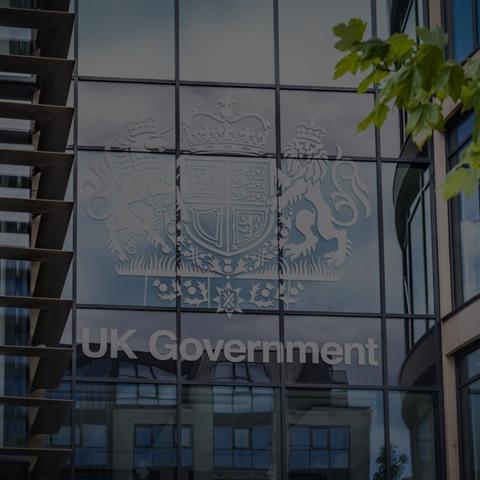By Louisa Guy, Policy Specialist, UK and Switzerland, PRI

The UK has a legally-binding commitment to reduce carbon emissions by 68% by 2030 and achieve net zero by 2050. The current UK parliament’s priorities and actions will determine whether it meets these commitments.
Whilst the Climate Change Committee assessed that the previous government’s policies and plans were insufficient to achieve these targets,1 the new UK government has pledged an ambitious sustainable finance agenda through the Financing Growth plan.
The UK has already made some progress on its sustainable finance architecture. This includes the Financial Conduct Authority’s (FCA) Sustainability Disclosure Requirements (SDR), its finalised investment labels regime, its anti-greenwashing rule and the new Transition Plan Taskforce (TPT) guidance. There are also plans to bring the International Sustainability Standards Board (ISSB) framework into UK law.
We know from UK signatories that there is extensive appetite for policy measures that enable and accelerate the building blocks of a sustainable financial system, and that signatories want to ensure their own investee company engagement is in alignment with the transition.
However, there is much more to do. The government’s focus must now be on creating green investment opportunities, implementing pledges and ensuring the interoperability of key sustainable finance policies. This will secure the transition to a sustainable and equitable economy.
1. Aligning the National Wealth Fund with government priorities
The new Labour government created the National Wealth Fund to support economic growth and clean energy missions. Within this blended finance structure, public funding and risk-sharing aim to mobilise private capital towards investable and dependable green projects.
The government initially pledged to allocate an additional £7.3 billion (now reduced to £5.8 billion) through the UK Infrastructure Bank (UKIB) to catalyse investment in five priority sectors - green steel, green hydrogen, industrial decarbonisation, gigafactories, and ports . To ensure this investment strategy delivers on economic growth, the government should reduce the risk of conflicting signals by aligning wider government actions and policy developments with the Fund’s activities.
2. Building a transition planning ecosystem
Whilst momentum for the economic transition has grown, there is currently a scarcity of commercially viable and scalable green investments.
Wider sustainable finance policies and standards, such as taxonomies, transition plan and disclosure requirements, should be developed in a coordinated manner.
The TPT in the UK serves as a strong model for how public and private sectors can come together to determine what constitutes a credible and effective transition plan. Feeding into a transition planning ecosystem, the TPT’s outputs will be taken forward by the IFRS Foundation, expanding the remit of the TPT’s work globally.
Transition plan disclosures should move from a ‘comply or explain’ to a mandatory basis at the earliest opportunity, with timelines provided. Relevant government departments and regulators should roll out a comprehensive and credible transition plan disclosure regime under SDR which incorporates and builds on the TPT disclosure framework requirements.2
Ensuring investors have not only the information but also the tools required to fully engage in the transition is a crucial signal of government support.
3. Ensuring policy interoperability – in the UK and globally
To revive the UK’s position as a leader in climate and sustainable finance policies, the government should focus on the interoperability and implementation of its regulatory framework.
The UK benefits from close links with the EU, with many UK-based investors subject to EU regulation. Striving for alignment reduces the burden on investors who may be required to comply with a range of policies across jurisdictions. The UK should also seek to adapt critical policies to be interoperable with US and Asian markets.
The FCA’s SDR and investment labels regime offer clear regulatory standards to support investor disclosure on sustainability claims. To meet investor priorities and promote internationally coherent fund labels, regulators should aim for global alignment, share best practices, and avoid market fragmentation.
The UK stands at a critical juncture
With a new government in place and a commitment to robust sustainable finance mechanisms, the pathway to transition is both promising and demanding. Aligning the National Wealth Fund with wider government policy, developing a coherent transition planning ecosystem, and focusing on sustainable finance policy interoperability are key to driving forward this agenda.
By maintaining a clear focus on these priorities and working with international partners, the UK government can turn its climate ambitions into tangible, transformative outcomes for a more sustainable future that benefits investors and their beneficiaries.
The PRI blog aims to contribute to the debate around topical responsible investment issues. It should not be construed as advice, nor relied upon. The blog is written by PRI staff members and occasionally guest contributors. Blog authors write in their individual capacity – posts do not necessarily represent a PRI view. The inclusion of examples or case studies does not constitute an endorsement by PRI Association or PRI signatories.
References
1 Climate Change Committee (2024), Progress in reducing emissions 2024 Report to Parliament
2 PRI and IIGCC (2024), Policy briefing on key sustainable finance policy priorities for the UK












